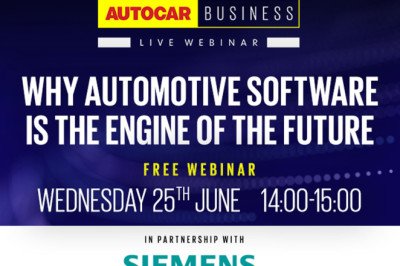
Emissions controls garner more hate than just about anything else in the automotive world. And this isn’t some fad hatred that will fade away. It was forged long ago in the underwhelming fires of the Malaise Era, passed on through generations of car enthusiasts. Smog controls have forever been seen as the destroyer of horsepower, the killer of all things fun, the Toby Flenderson of the auto industry.
But really, they’re just misunderstood. At the time, they were a clumsy solution to serious problem, but in the intervening years we have all borne witness to a golden age of performance cars that produce power figures and lap times that have shattered our perception of reality. And they did it all while meeting the strictest emissions standards on record.
Misdirected hatred aside, emissions controls are an important piece of the automotive puzzle. In the days before their existence, the air in densely populated areas became completely unbearable. People around Los Angeles complained of an intense burning sensation in their throats and eyes, and visibility was cut down to just a few blocks. Some people even donned gas masks. The presence of this mysterious haze, unlike anything people had experienced before, perplexed anyone who encountered it.
The cause of the chemical-laced fog was discovered in 1948 by biochemistry professor Arie Jan Haagen-Smit, a member of the so-called “Dutch Mafia” on the Caltech campus. Haagen-Smit spent most of his early days studying essential oils and the complex flavor of pineapples. But one day he noticed that the smog-filled air had damaged crops grown in the LA Basin, and he did what any good scientist would do: He found out why. It turned out to be a photochemical reaction between sunlight, oxides of nitrogen (NOx), and hydrocarbons (HC). Hence the name, photochemical smog. And while there were other sources that contributed to the problem, Haagen-Smit’s research placed most of the blame on the automobile. He became the driving force behind the push for automotive pollution controls.
For this part of the story, I’m going to focus on smog controls that involve the intake side of the engine. And it just so happens that the first-ever smog contro, which debuted in 1961, was tied into the intake manifold.
It’s an accepted fact that every internal-combustion engine has blow-by, the leakage of at least some part of the air-fuel mixture from the cylinders into the crankcase. New, old, doesn’t matter. Blow-by happens, all of those gases build up in the crankcase, and they need a place to go. Early on, engineers designed the road-draft tube as a simple way to vent the crankcase. This primitive little tube took those nasty, foul-smelling fumes and sent them straight into the atmosphere. Unfortunately, crankcase vapor is loaded with hydrocarbons, and it also leaves a nasty slick of oily residue on the underside of the car. There had to be a better way to handle all those blow-by gases.
The solution to the road-draft-tube dilemma is a system called positive crankcase ventilation (PCV). At the heart of the setup exists the PCV valve. This little valve is usually fitted to the valve cover with a rubber grommet and plumbed to manifold vacuum with either a rubber hose or a hard plastic tube. It has two jobs: One is to limit the amount of crankcase vapor going into the engine, and the other is to limit the amount of vacuum pulled on the crankcase. When the engine is running, vacuum unseats the valve, which allows regulated crankcase vapor to flow into the intake manifold, where it mixes with the air-fuel mixture and is ultimately burned up during combustion. The more the throttle is opened, the less engine vacuum exists, and the valve allows more vapor to enter the intake. There’s always a baffle inside the valve cover to keep liquid oil from hitting the valve and getting pulled into the intake.
Opposite the PCV valve is the often forgotten but equally important fresh air hose. Early versions of PCV integrated the fresh air intake into the oil cap. But most of the time, you’ll find it attached to the valve cover with a rubber grommet. It lets filtered air into the engine, which happens for a couple of reasons. It keeps a vacuum from forming in the crankcase, which would be bad, and it also lets those blow-by gases mix with fresh oxygen before they’re burned up back in the combustion chamber. The fresh air hose even serves as a secondary path for crankcase pressure in certain situations, like when the engine is under a heavy load.
Now, don’t assume that every crankcase ventilation system uses a little valve with a spring in it. Some manufacturers will employ a simplified setup that uses a fitting with a metered orifice rather (a precise, small hole, in other words) than a valve. Outside of the missing valve, it functions the same as a standard PCV setup, except sometimes the shop manual or the underhood emission label will call it “closed crankcase ventilation.”
Certain manufacturers like to throw an oil separator into the mix. It is supposed to help alleviate the chance of oil making it to the intake manifold. It helps, but doesn’t always work. That’s one of the minor drawbacks to PCV. And for that reason, oil catch cans exist, a simple device that gets installed between the vent and the intake plenum. It has a larger volume than a factory oil separator does and usually has some sort of diffuser. The larger volume helps separate more liquid from the vapor, and the liquid (oil or other) gets stored in a removable container. Sometimes, if you spend enough, they’ll even have a little drain on the bottom.
No matter how complex car companies might make them, no matter what weird places they might stick PCV components (I’m looking at you, Alfa Romeo), the end result is still the same. And before you ditch this simple system in favor of a set of breathers, just know a functioning PCV system scavenges those nasty blow-by gases better than a road-draft tube or breather ever could. So, it’s not only good for the air we all breathe, but it’s better for your engine and the oil it relies on to keep things moving.
Although PCV still exists on modern ICE vehicles, there are a few types of pollution control that eventually got the axe. Not because they weren’t effective, but because technology rendered them obsolete. These systems worked together to improve cold-start performance by heating the incoming air charge. Warmer air helped with fuel vaporization, better fuel vaporization meant less fuel, and a faster warm-up meant less time on the choke. Which all added up to fewer HC and CO emissions.
First came the thermostatic air cleaner (TAC), which hit the streets sometime around 1966. Basically, it was a hot air intake, but only when it was necessary. A simple but effective bit of engineering placed a piece of sheet metal around the exhaust manifold. Attached to the sheet metal shroud was a length of ducting that sent hot air up to the air filter housing. A set of linked air doors inside the intake tube controlled the flow of hot or ambient air. In most cases, a thermal vacuum switch was used to control the air doors. But General Motors, with its dare-to-be-different attitude, used a wax pellet actuator. On a cold engine, the ambient door was closed, and the hot door was open. As it warmed up, the ambient door would open as the hot door closed. And yeah, it caused a minor restriction to air flow, but we all know the fix for that—just flip the air cleaner lid.
The TAC worked, but I guess it didn’t work well enough. So sometime around 1974, automakers started to use early-fuel-evaporation, or EFE. It must have been for those especially frosty days because, rather than just warming the air as it was drawn into the air cleaner, EFE was designed to heat the air-fuel mixture as it was pulled into the intake manifold. Early versions placed a valve between the exhaust pipe and the exhaust manifold. A vacuum-controlled actuator would close the valve, and exhaust gases would be forced back up to heat the intake manifold. Thankfully, that goofy idea was eventually replaced by a heated element that lived at the base of the carburetor—a much more efficient solution than exhaust fed back into the intake.
These two systems worked together to effectively reduce hydrocarbons and carbon monoxide emissions. The last EFE system was used on a 2000 Chevy Metro, powered by the famous 1-liter three-cylinder engine with throttle-body injection. And as far as I can tell, the final TAC setups were used by General Motors in 1995 on the last of the TBI-equipped truck engines.
So PCV handled the crankcase emissions, and the fancy heaters reduced some of the pollutants that took off out of the tailpipe. But what about those pesky vapors that just up and evaporate out of the gas tank? Well, those are handled by a variety of hoses, valves, and a charcoal canister that make up the evaporative emissions systems, or EVAP if you’re into industry lingo. EVAP was the second major advancement in pollution controls and rolled into showrooms as early as 1970. And outside of reduced emissions, it also helped erase some of that musky raw fuel smell that just about every car had prior to its existence.
When EVAP was first implemented, it was pretty straightforward. Fuel vapor was collected and stored in a charcoal canister and then purged back into the intake manifold when the engine was running. Because the fuel system was sealed, there had to be a way to draw in fresh air as the level in the tank dropped, so the vented fuel cap was created. The cap allows air in through a check valve, so a pressure differential isn’t created between the inside and outside of the tank. Because, well, pressure differentials and fuel tanks don’t mix very well. And as modern engine controls emerged and stricter regulations were enacted, EVAP became a bit more complex.
Before computer controls, fuel vapor was usually purged via ported vacuum (vacuum before the throttle plates), and thermal vacuum switches were employed to avoid issues on cold engines. EVAP evolved once computer controls took over, and thermal vacuum switches were replaced with duty-cycled purge valves. This allowed for better control over when and how much fuel vapor was purged, which only happens during closed-loop fuel control. Despite advancements in technology, these early setups still couldn’t keep track of leaks or purge activity.
The introduction of on-board diagnostics with OBD-II and stricter emissions regulations brought some big changes to EVAP. In 1996, certain vehicles now had the ability to detect purge flow. Some manufacturers, like GM, used a part called a purge vacuum switch. It would stay closed unless the ECM opened the purge valve and a vacuum was applied. Once a vacuum was present, the switch would open, and the ECM would know vapor was purging. Others, like BMW, used the fuel tank pressure sensor and would isolate the fuel tank, let the pressure build up, and then duty-cycle the purge valve. If the tank pressure dropped, all was well in the land of EVAP.
The whole purpose of evaporative emissions is to keep fuel vapors contained, and the system isn’t really doing its job if they find a way out. To help ensure containment, in 1998, new vehicles needed to be able to self-check for leaks as small as half a millimeter. Annoyingly, several different methods for doing a leak check exist. Some EVAP systems use the natural pressure that builds in the tank to make sure everything is in order. After the car is parked, the system is sealed off from any outside interference, and the fuel tank pressure sensor reports to the control module. If the pressure doesn’t rise to the occasion and stay there, the ECM knows something isn’t right. Others work in a similar fashion, but rather than wait for pressure to rise naturally, they use a small pump, expertly named the leak detection pump (LDP). The LDP does exactly what you think, it pressurizes the system, and the ECM monitors the flow of the pump to spot any issues. Toyota got a little too extra in the early aughts by using a method that would isolate the tank and charcoal canister, and it was quite the complex little setup. But no matter how it’s done, the end goal is the same: Alert the driver to an issue so it can get sorted out.
So, before you go ripping out any of those pesky pollution controls, just remember, your car isn’t going to make any more power, but it might smell worse. Stay tuned for part two, where we’ll discuss everyone’s favorite part to take a Sawzall to, the catalytic converter. And, of course, other exhaust-related parts, too …
Excellent explanations. My 72 Skylark has many of the controls described. Are you going to address the DEF systems on diesels? Thanks again and looking forward to the next installment.
Looking forward to part 2. I would be interested in the parts of the emissions control systems that took away power from the early 70’s and maybe an explanation of how one can do emissions but better on those cars.
Might note how some state enforce this is also a problem. CARB and the associated states are ruthless on enforcement.
Just take a car to be tested and if it passed at the tail pipe let it go. Stop working what air filter is on it.
Also leave race cars out of this. There has been a move to make race only cars liable for emissions.















Facebook Conversations